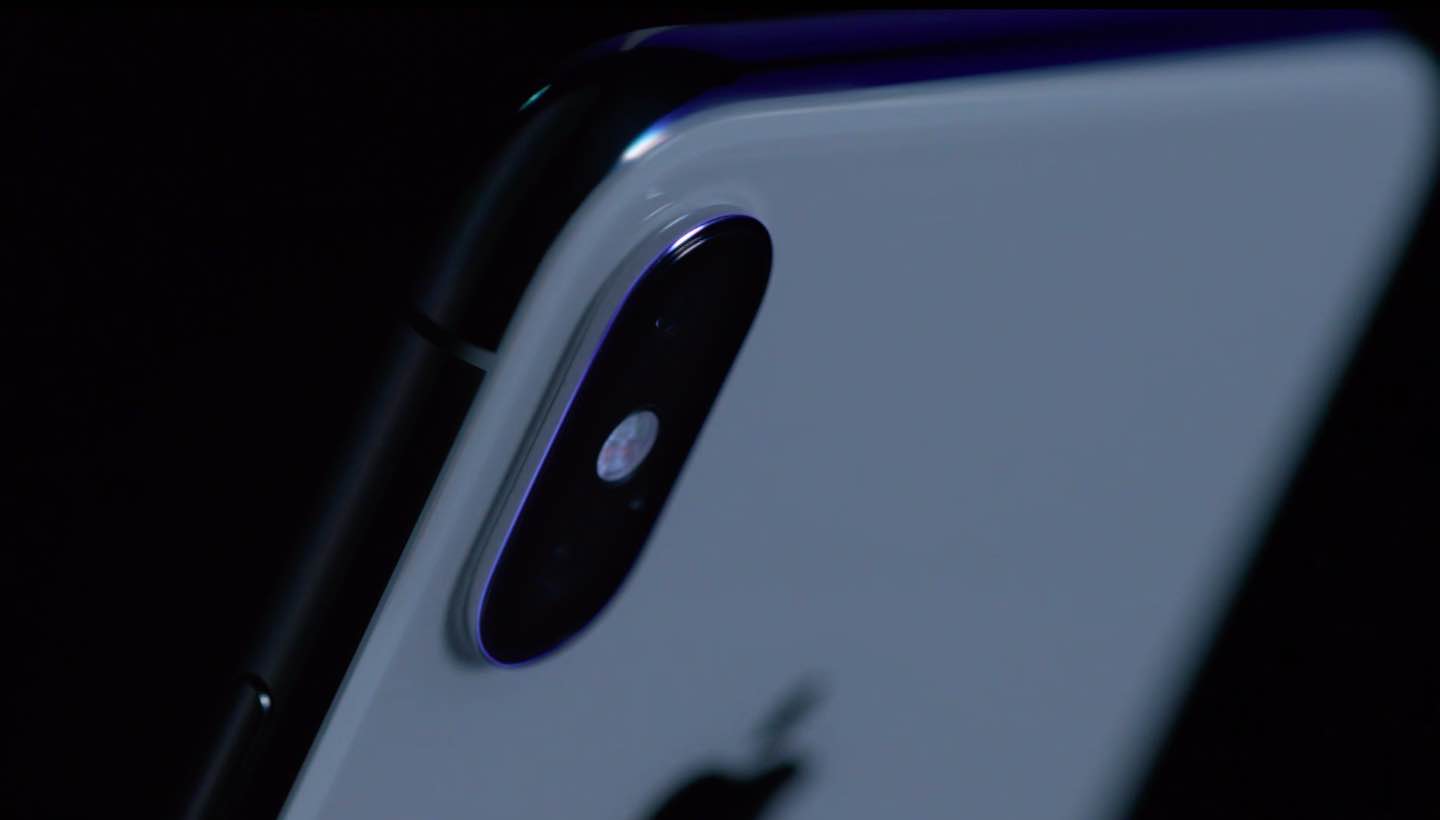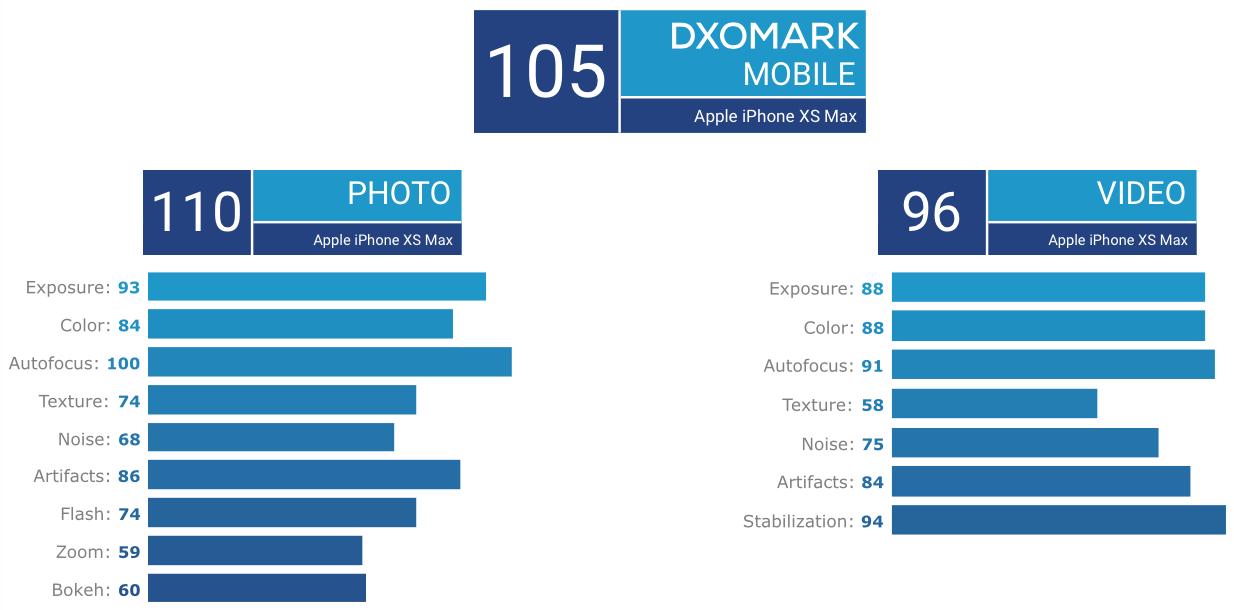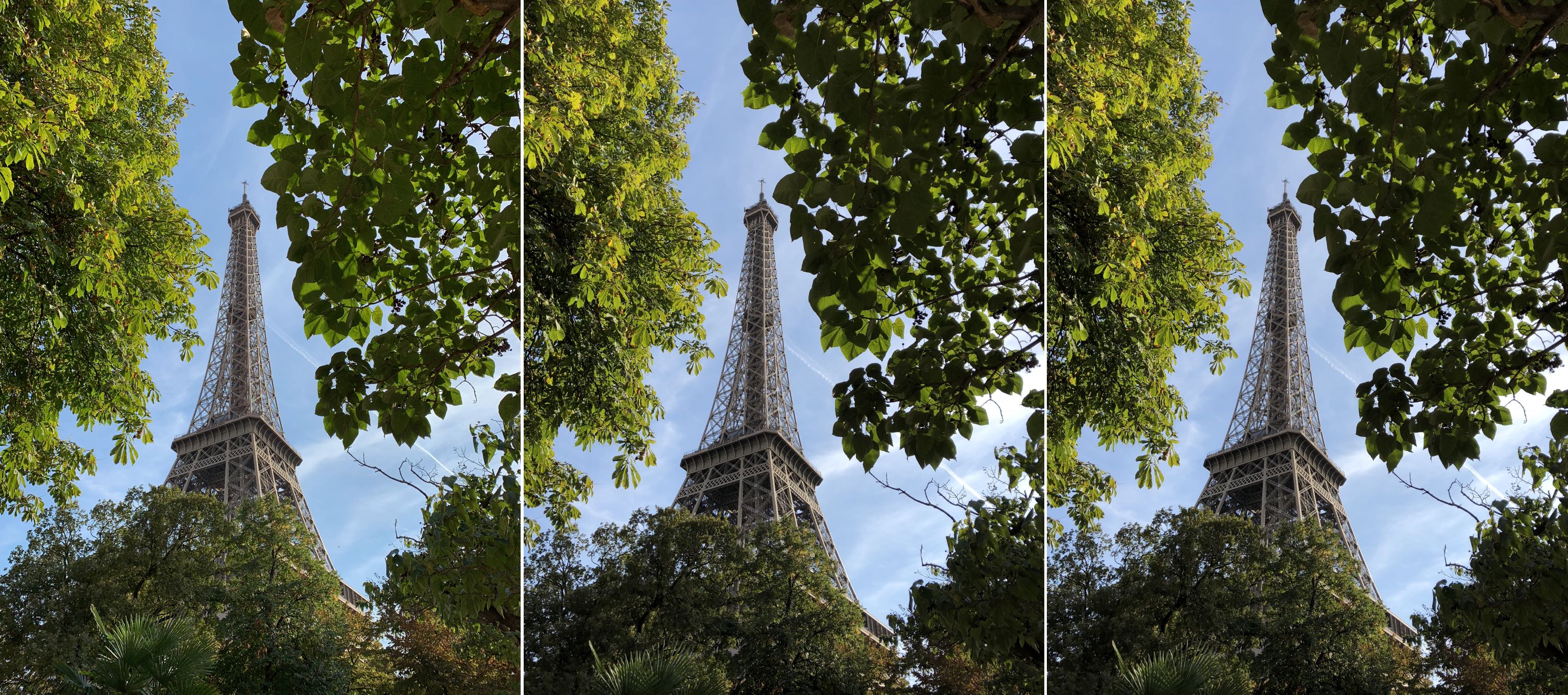
DxOMark last week published their full-on review of the iPhone XS camera. We originally skipped it because DxOMark scores can be very misleading or just meaningless, but have decided to pull some choice quotes that best describe why, in many areas, Apple’s new flagship phone offers noticeable improvements over last year’s iPhone X.
DxOMark ranks iPhone XS camera #2
Based on an in-depth review of the dual-lens camera on the back, DxOMark awarded iPhone XS Max an overall score of 105 points, good for a second place right behind Huawei’s triple-lens P20 Pro flagship smartphone which scored 109 in the site’s all-time rankings.

iPhone XS camera is trailing only Huawei’s P20 Pro at 109 in DxOMark’s all-time rankings
DxOMark reviewers claim to have captured and evaluated over 1,500 test images and more than two hours of video shot in 4K resolution. The images and videos were captured both in lab conditions and outdoors using the stock Camera app with the default settings.
Read about DxOMark’s methodology at the official website.
The DxOMark review pertains to the top-of-the-line iPhone XS Max model with a 6.5-inch OLED display. Since both new iPhones offer exactly the same camera hardware, the review of the Max camera applies equally to the XS.
Flagship imaging power
Calling it one of the best mobile cameras they have ever tested, DxOMark praised “excellent” photo and video quality in bright light. The photos look business and deliver a “very wide dynamic range” (the DCI-P3 color space which Apple’s displays also use) and “good detail.
iPhone XS users should also experience spot-on exposure on outdoor images with sharp detail.

Exposure in bright light: iPhone XS Max (left), iPhone X (middle) and Huawei P20 Pro (right)
Those improvements can be chalked up to a great extent to Apple’s new Smart HDR feature which seems to be doing a great job at delivering more highlight and shadow detail to your photos. And because the phone runs Apple’s industry-leading A12 Bionic chip, it displays HDR images in real-time in the viewfinder so what you see is what you get.
One tiny detail:
On the software and image processing side of things, the improvements are more obvious. During still image capture, the camera continuously captures a multi-frame buffer at different exposures, allowing for simultaneous zero shutter lag and HDR processing, something that is unique to the new iPhone at this point.
“As far as we are aware, this feature is not currently available from any of the device’s close competitors,“ the review added. Apple customers should appreciate “very good target exposure and a wide dynamic range in all conditions” made possible by Smart HDR.
Still images: pros and cons
Here are DxOMark’s pros and cons in terms of still images:
Pros
- Very good target exposure and dynamic range in bright light and indoor conditions.
- Good detail in all conditions.
- Vivid and pleasant colors in most situations.
- Fast and accurate autofocus.
Very good subject isolation and pleasant spotlight effect in bokeh mode
Cons
- Flash images often underexposed.
- Luminance noise is noticeable in lower light and the shadow areas of high-contrast scenes.
- Coarse luminance noise and a lack of detail are noticeable in zoom shots.
- They were equally impressed by the video recording improvements as well.
Video recording scores
The iPhone XS camera has achieved an excellent video score of 96 points on DxOMark’s scale, thanks to its “outstanding performance in bright light conditions.”
PRIMER: What is DxOMark and how is it calculated?
Courtesy of Apple’s in-house designed A12 Bionic chip with dedicated 10x faster machine learning hardware, the new iPhone XS devices offer improved sensor readout speed which can cut down on that unwanted rolling-shutter effect.
The rolling-shutter effect occurs when panning. On the iPhone XS series, it’s much less intrusive than on rival phones like Google’s Pixel 2 and Samsung’s Galaxy Note 9. You can see that vertical lines are much more “leaning” on the latter two devices in the sample clips below.
You should be aware of certain drawbacks when it comes to shooting video.
White balance instabilities & exposure stepping
For starters, expect some white balance instabilities in typical indoor lighting conditions, resulting in light exposure stepping when panning. Moreover, there’s a tiny slight loss of sharpness when using the tracking autofocus in dimli-lit environments. In this particular instance, sharpness is subjective as it denotes the way you visually perceive quality of detail resolution and contrast in an image.
As for Apple’s video stabilization algorithm, in conjunction with optically stabilized lenses, it’s proved great in all light conditions—DxOMark notes that it’s especially effective in counteracting high-frequency motion, like hand shake.
Video capture: pros and cons
Here’s what they liked and disliked when it comes to shooting video.
Pros
- Very wide dynamic range.
- Very good image stabilization.
- Fast and repeatable autofocus.
- Good image detail, especially when shooting outdoors.
Cons
- Sometimes unstable white balance when shooting under indoor lighting.
- Luminance noise in lower light.
And now, the final conclusion.
Wrapping it all up
DxOMark summed it up:
iPhone XS Max comes with one of the best mobile cameras we have ever tested, and in many areas offers noticeable improvements over last year’s iPhone X. Both still and video image quality in bright light are excellent, with a very wide dynamic range and good detail. Autofocus and image stabilization work swiftly and efficiently, and the camera is very reliable overall, consistently delivering good results.
The only noteworthy downsides to shooting video with these new Apple smartphones include a little intrusive luminance noise in low-light condition and sometimes unstable white balance when shooting under indoor lighting.
If that doesn’t bother you too much—and you don’t mind the fact that Apple’s zoom mode lags somewhat behind the top-ranked Huawei P20 Pro device—iPhone XS or iPhone XS Max should prove “a surefire option for any mobile photographer.”
Would you agree with that assessment?
Meet us in comments!